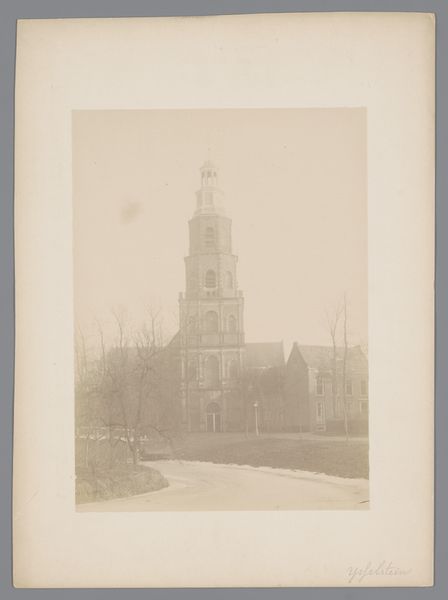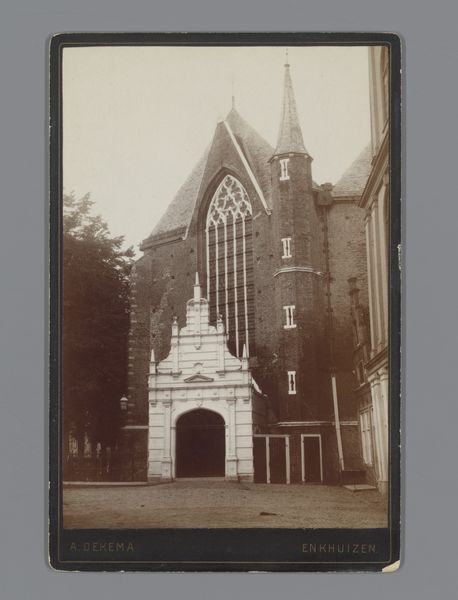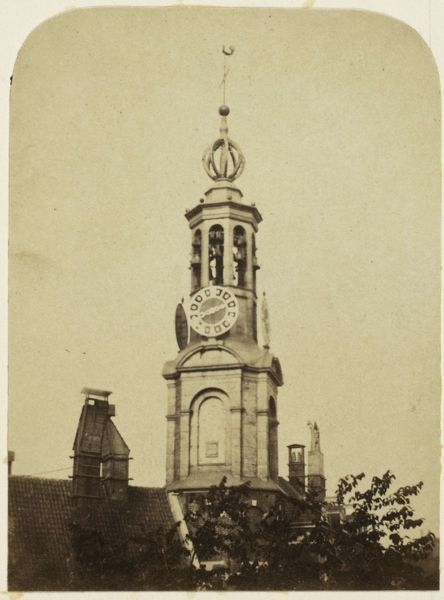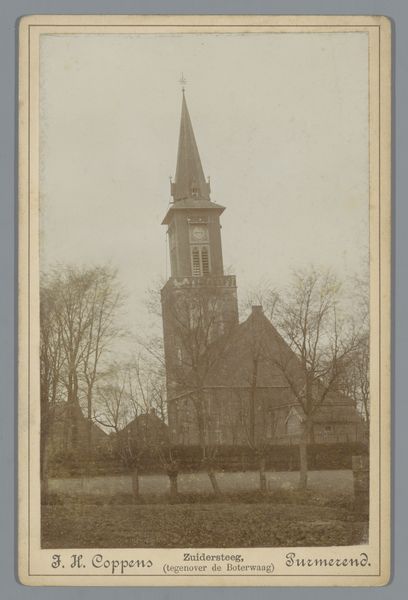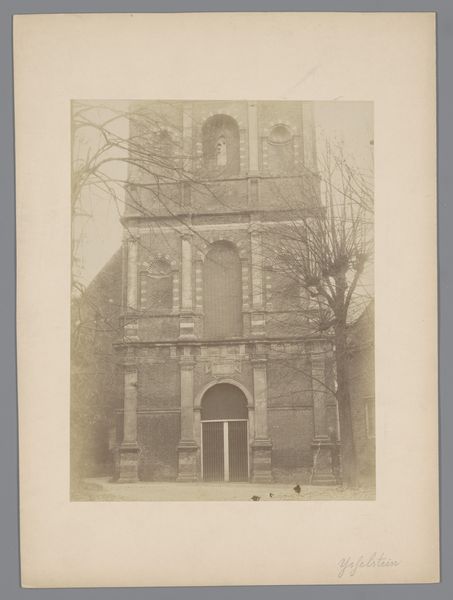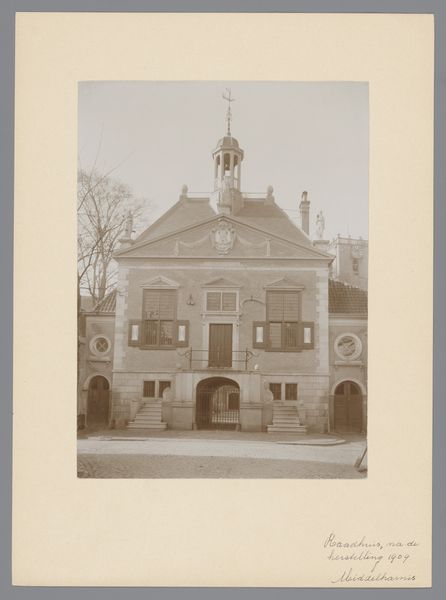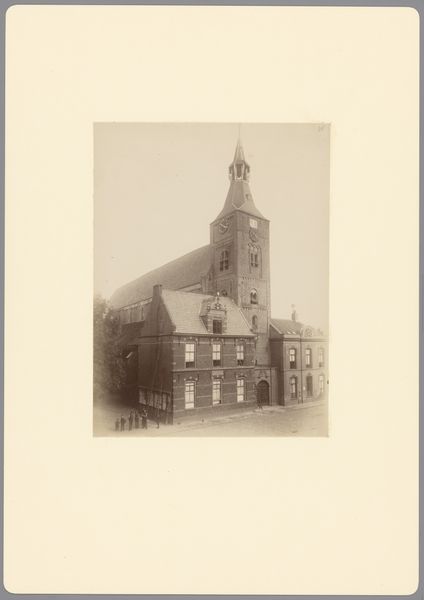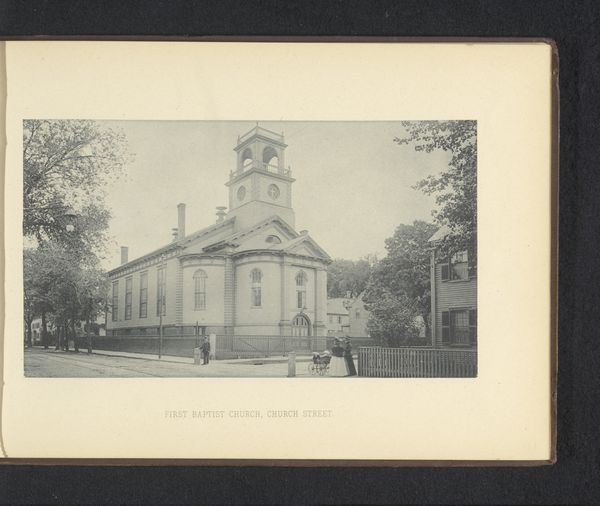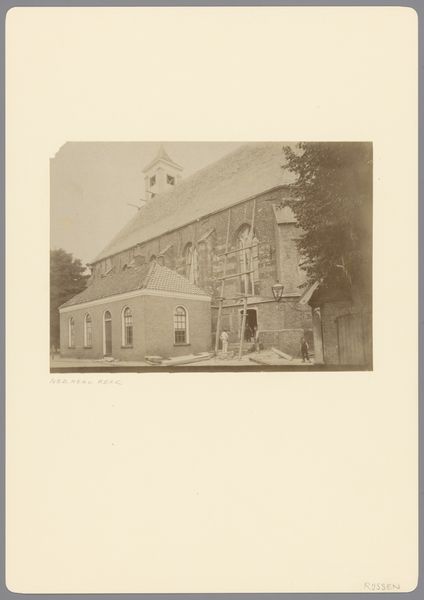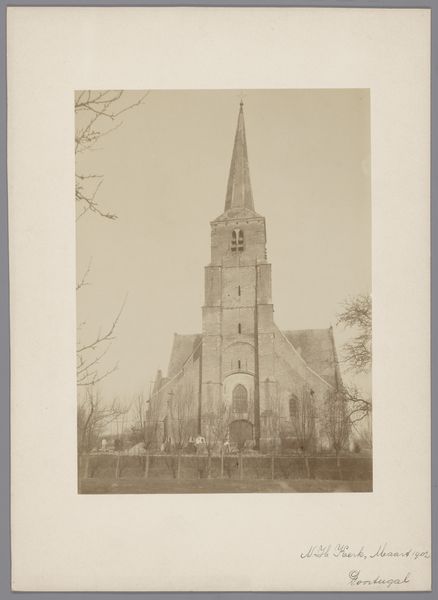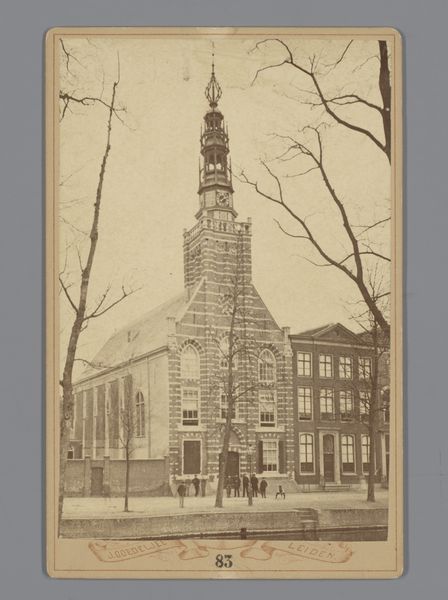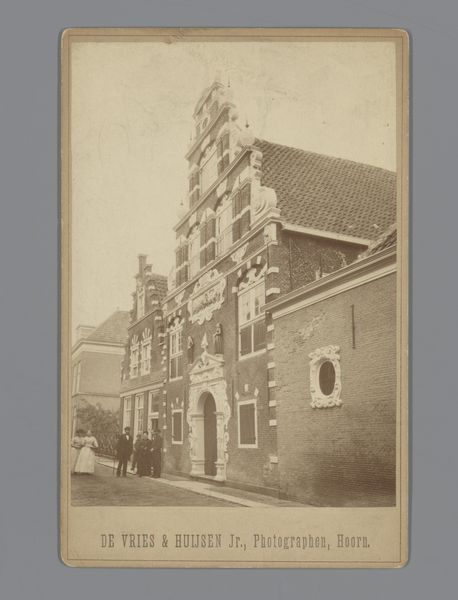
photography, gelatin-silver-print
#
landscape
#
photography
#
gelatin-silver-print
#
cityscape
Dimensions: height 168 mm, width 108 mm
Copyright: Rijks Museum: Open Domain
Curator: Let’s turn our attention to "Gezicht op de Sint-Petruskerk te Leiden," a gelatin-silver print created by Jan Goedeljee, sometime between 1879 and 1915. Editor: Ah, a cityscape bathed in sepia tones! It has this lovely, slightly melancholic feel, like a memory fading at the edges. Curator: Indeed. Goedeljee's choice of the gelatin-silver process contributes to that very effect, producing fine detail with subtle tonal variations. The Petruskerk was, and remains, a significant landmark in Leiden. Capturing it connects Goedeljee to the established traditions of topographic views and the photographic documentation of civic architecture. Editor: You know, despite the somber tone, there's a sense of grounded solidity. The church almost seems to grow organically from the earth, anchored by those stark, leafless trees. Do you feel how the architectural structure interacts with nature? The photograph becomes this still point between built human history and continuous life. Curator: Absolutely. Consider the social context of late 19th and early 20th century photography, where cityscapes often functioned as affirmations of civic pride and progress. Yet, by imbuing it with this evocative tonality, Goedeljee transcends a simple record and hints at something more, a kind of romantic contemplation. Also consider, perhaps, the political neutrality of religious imagery within a deeply divided society. Editor: Yes! It’s almost as though he captured not just a building but also a feeling—a quiet respect for history and a gentle acknowledgement of the passage of time. It makes me consider our relationship to the monuments that surround us. How can a photograph encapsulate so much unsaid? Curator: Exactly. And within a wider art history narrative, photography was still gaining respectability as a legitimate artistic medium during Goedeljee’s active period, it struggled to achieve the same prestige of more “accepted” methods of making. But what’s clear here is, Goedeljee saw the inherent art form embedded in the mechanical arts. Editor: He created a document and an expression, all in the same instant. Seeing it has that lingering effect—what will remain, and what stories can photography breathe back to life? Curator: It is a rather intriguing and haunting image isn’t it? Thanks for sharing those personal observations! Editor: My pleasure. What an insightfull conversation, thanks for all your input and for expanding on mine.
Comments
No comments
Be the first to comment and join the conversation on the ultimate creative platform.
